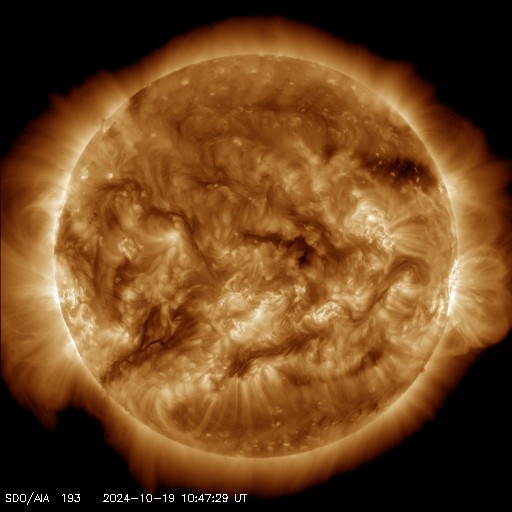Het archief bekijken van maandag 5 april 2010
Activiteitenrapport
Opgemaakt door de NOAA © SWPC en verwerkt door Poollicht.be
USAF/NOAA rapport van de zonneactiviteit en geofysische activiteit
SDF Nummer 095 gepubliceerd omstreeks 2200Z op 05 Apr 2010IA. Analyse van de actieve zonneregio's en zonneactiviteit van 04-2100Z tot 05-2100Z
IB. Voorspelling zonneactiviteit
IIA. Samenvatting geofysische activiteit 04-2100Z tot 05-2100Z
IIB. Voorspelling geofysische activiteit
III. Kans zonnevlammen van 06 Apr tot 08 Apr
| Klasse M | 01% | 01% | 01% |
| Klasse X | 01% | 01% | 01% |
| Proton | 01% | 01% | 01% |
| PCAF | green | ||
IV. Penticton 10.7 cm Flux
Geobserveerd 05 Apr 079 Voorspeld 06 Apr-08 Apr 082/085/085 90 dagen gemiddelde 05 Apr 083
V. Geomagnetische A index
Geobserveerd Afr/Ap 04 Apr 011/013 Geraamd Afr/Ap 05 Apr 025/025 Voorspeld Afr/Ap 06 Apr-08 Apr 015/017-012/012-008/008
VI. Kansen op geomagnetische activiteit van 06 Apr tot 08 Apr
| A. Gemiddelde breedtegraad | |||
|---|---|---|---|
| Actief | 35% | 35% | 20% |
| Kleine storm | 20% | 20% | 10% |
| Zware-ernstige stormcondities | 10% | 05% | 01% |
| B. Hoge breedtegraad | |||
|---|---|---|---|
| Actief | 40% | 40% | 25% |
| Kleine storm | 25% | 30% | 15% |
| Zware-ernstige stormcondities | 15% | 10% | 01% |
Alle tijden in UTC
<< Keer terug naar de dagelijkse overview pagina
Op basis van de huidige parameters is er in de nabije toekomst een beperkte kans op poollicht op de volgende locaties van de hoge breedtegraad
Norilsk, VorkutaLaatste nieuws
Laatste forumberichten
Steun Poollicht.be!
Om ook bereikbaar te blijven bij grote poollichtkansen hebben we een zware server nodig die alle bezoekers aankan. Doneer en steun dit project zodat we online blijven en je geen enkele poollichtkans mist!

Laatste alerts
15:15 UTC - Geomagnetische activiteit
G1 - Kleine geomagnetische storm (Kp5) Drempel bereikt: 14:59 UTC
06:30 UTC - Type II radioemissie
Starttijd: 08/04/2025 05:53 UTC Geschatte snelheid: 456km/sec.
05:15 UTC - Hemisferisch vermogen
Het OVATION-model voorspelt dat het hemisferisch vermogen 50GW zal bereiken om 06:02 UTC
00:55 UTC - Coronaal gat
Een coronaal gat op de zuidelijke hemisfeer is momenteel naar de Aarde gericht. Een verhoogde zonnewind kan in ~3 dagen aankomen op Aarde
maandag 7 april 2025
20:45 UTC - Geomagnetische activiteit
Actieve geomagnetische condities (Kp4) Drempel bereikt: 20:39 UTC
Ruimteweer feitjes
| Laatste X-klasse uitbarsting | 28/03/2025 | X1.1 |
| Laatste M-klasse uitbarsting | 05/04/2025 | M1.0 |
| Laatste geomagnetische storm | 06/04/2025 | Kp5 (G1) |
| Zonnevlekkenloze dagen | |
|---|---|
| Laatste zonnevlekkenloze dag | 08/06/2022 |
| Maandelijks gemiddeld zonnevlekkengetal | |
|---|---|
| maart 2025 | 134.2 -20.4 |
| april 2025 | 151.3 +17.1 |
| Afgelopen 30 dagen | 135.2 -4.5 |





